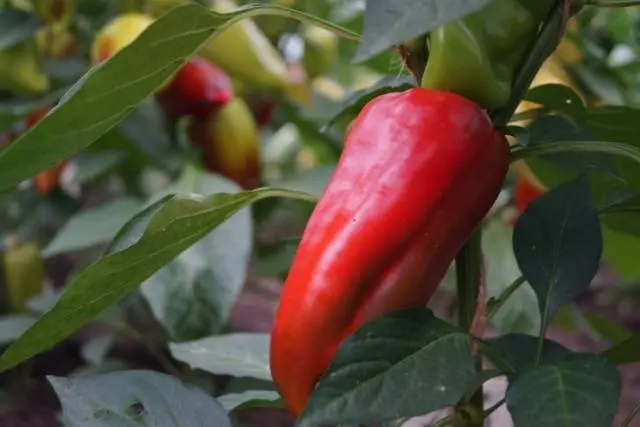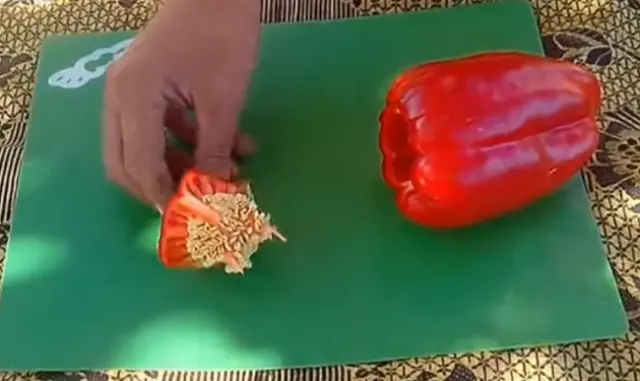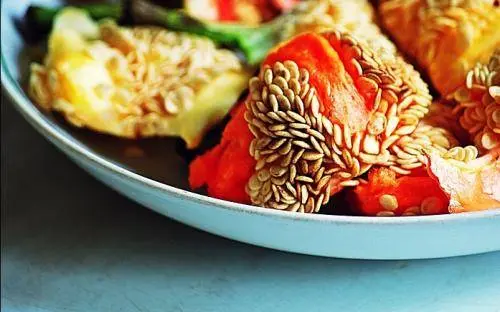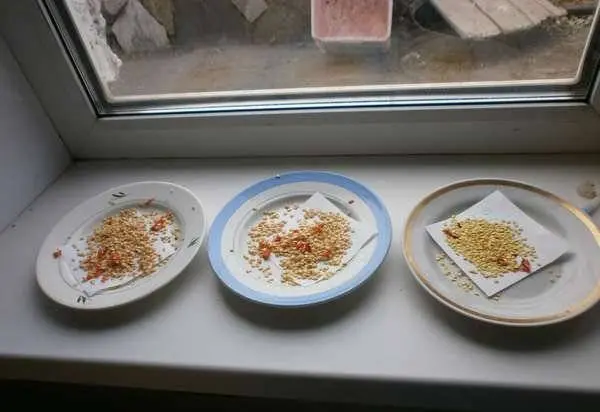Pepper is a rather heat-loving vegetable. But still, many gardeners manage to grow it even in the most inappropriate conditions. They find varieties that grow well in greenhouse conditions or even outdoors. In order to continue to grow their favorite varieties of this tasty and fragrant vegetable, gardeners collect seeds on their own. Properly collected seed retains all the positive properties and features. Let’s look at how to collect pepper seeds at home.

Selection of plants
A good pepper grows only from those seeds that were collected from a beautiful and strong bush. Here are some things to consider when choosing the right plant:
- keep in mind that cross-pollination can occur, so plant different varieties far from each other. Also, in no case do not grow bitter and sweet peppers nearby. The distance between the beds should be at least 1 meter;
- select 2 bushes of each variety for collection, as there is always a chance that one of them may get sick;
- consider how the vegetables are located on the bush, how strongly varietal features appear in them;
- start choosing bushes in the middle of the growing season so that there is time to observe the development and process of fruit ripening.

Selection of fruits
After choosing the plants, you need to start choosing the specific fruits that will produce the best seeds. In doing so, we take into account:
- select the peppers that are on the bush from the first to the third level. These should be the first ripened fruits, they are usually larger and stronger. You can also take those that were formed later, but then the germination and yield will decrease significantly;
- choose the largest and ripest vegetable. It must have the perfect color, shape and size;
- you can not take unripe fruits for these purposes;
- you can pick an almost ripe vegetable and leave it to ripen indoors. Such fruits have better properties, and the seeds will sprout and grow faster as a result.
How to collect pepper seeds
Much also depends on the process of preparing the seed material. Only large ripe vegetables without defects are plucked. Next, they need to be left for a while to ripen. This can take a week, or maybe a month, depending on the size of the vegetable and the climatic conditions.

When the surface of the fruit becomes wrinkled and soft, this is a sign that the seeds can be removed. To do this, an incision is made around the stalk, after which you can get the seeds from the pepper. The remains are easily shaken out of the fetus. Pour the seed from each vegetable onto a separate saucer and be sure to immediately sign it.
Saucers with seeds are again placed in a dry, warm place until completely dry. In this form, the seed should stand for another 2 weeks. Each vegetable can contain from 100 to 150 seeds. And from each kilogram of pepper it will be possible to collect up to 8 grams of dry seeds.
If you process a large number of vegetables, then also use a respirator. Wash your hands with soap and water immediately after.

Seed storage
In order for the seeds to be well preserved, you need to create the necessary conditions for this:
- So that the seeds do not lose their germination, they are cleaned in a cool place with a low level of humidity. There should not be solar radiation. You can also store them at room temperature, but the room must be dry.
- Seeds are placed in paper envelopes or boxes. They also indicate the name of the variety and the year when they were collected.
- Under the right conditions, seeds can be stored for at least 2 or 3 years. But annual peppers sprout and grow best of all.

Conclusion
Seed material can be easily collected by yourself. As you can see, for this you just need to collect ripe fruits, and then dry them and remove the seeds. Thus, you will not need to spend money on purchased material every year. And you will know exactly what variety you will grow, its characteristics and taste.









